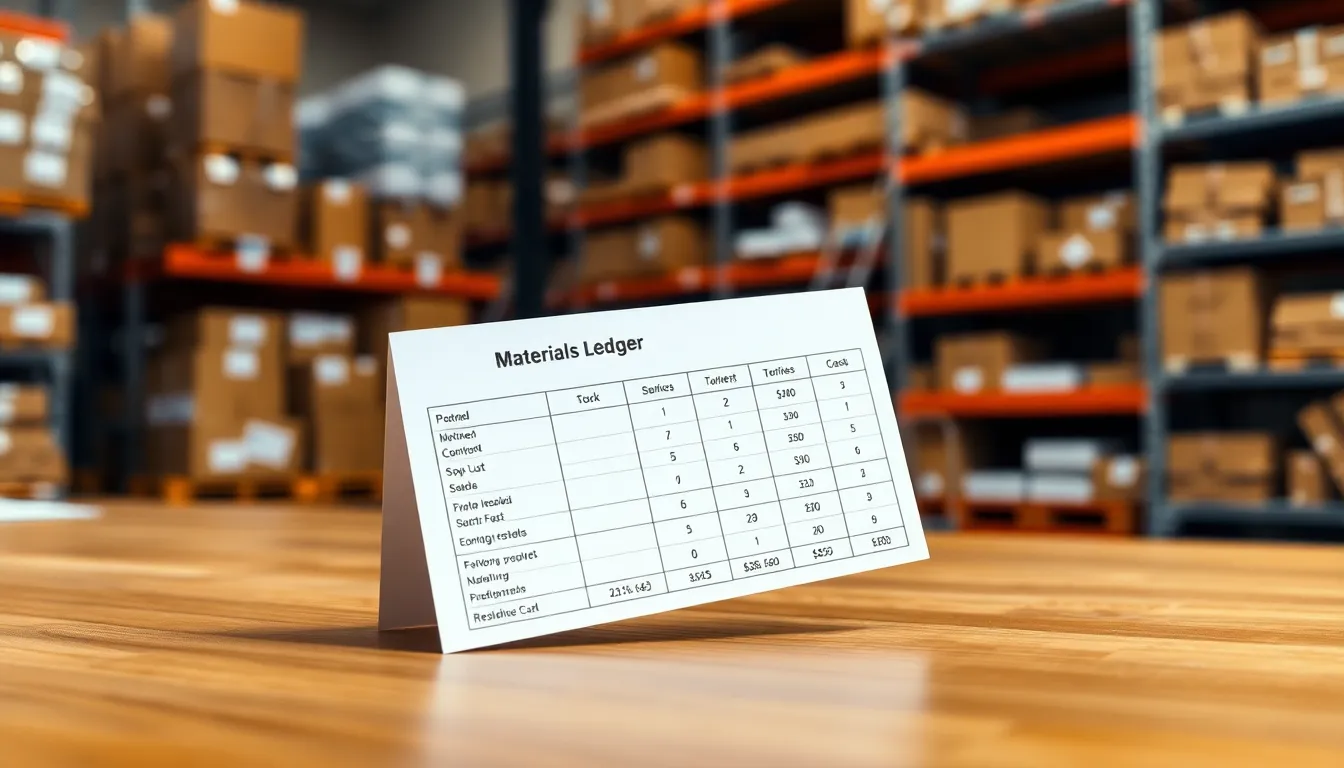When it comes to materials management, materials ledger cards are the unsung heroes of the inventory world. These handy little documents keep track of every item like a meticulous librarian cataloging books. But what exactly makes them so special? If you’ve ever found yourself scratching your head over what characteristics to look for, you’re not alone.
Table of Contents
ToggleOverview of Materials Ledger Cards
Materials ledger cards serve as crucial instruments in managing material inventories. They contain essential information that assists in monitoring stock levels effectively. Key characteristics define their utility and importance.
Each materials ledger card typically includes item descriptions. Specific details highlight the attributes of each inventory item, enabling easy identification. Inventory quantities often appear on these cards, portraying both the on-hand and allocated amounts.
Transaction histories play a vital role within materials ledger cards. These histories track movement details for each item, including receipts, issues, and adjustments. A clear chronological record provides transparency and accuracy in inventory management.
Another characteristic is the inclusion of supplier information. This data identifies where materials originate, supporting procurement processes. Furthermore, these cards may contain cost information, representing the value associated with each item.
Visual layouts and designs enhance usability. Often, cards employ straightforward formats that minimize confusion. Such layouts allow team members to quickly gather relevant information without delays.
Periodic updates ensure the data remains current and accurate. Regularly reviewing cards helps maintain inventory integrity, aiding in inventory audits and control measures. They support effective decision-making through timely insights.
Materials ledger cards embody diverse characteristics that contribute to efficient inventory management. Their structured and informative nature fosters better tracking, strategic planning, and operational success.
Key Characteristics of Materials Ledger Cards

Materials ledger cards contain several key characteristics that facilitate effective inventory management. These features ensure accurate tracking and control over materials.
Accuracy in Record Keeping
Accurate record keeping is essential for effective inventory management. Materials ledger cards maintain precise information about stock levels, minimizing discrepancies. Each transaction updates quantities and provides a clear history of item movements. Regular audits of these records help to ensure that discrepancies are caught early. They serve as reliable references during order evaluations, providing clarity on available stock.
Tracking Inventory Levels
Tracking inventory levels becomes straightforward with materials ledger cards. Each card details current quantities, making it easy to identify stock shortfalls. Information spans incoming and outgoing materials, offering a comprehensive overview of inventory status. Teams benefit from this clarity when planning restocking actions and managing resources. By monitoring usage rates, organizations can refine procurement strategies for optimal efficiency.
Cost Management and Control
Cost management is integral to utilizing materials ledger cards effectively. These cards include detailed cost data linked to each item, offering insights into overall expenditures. Analyzing this information helps in recognizing trends and making informed purchasing decisions. Budget control gains importance when accurate cost tracking is available. Comparing costs associated with different suppliers informs strategic supplier selection based on value.
Real-Time Data Updates
Real-time data updates significantly enhance the functionality of materials ledger cards. Each transaction prompts immediate adjustments to recorded quantities, reflecting true inventory levels accurately. Staff members access current information that supports quick decision-making in stock management. This real-time approach minimizes the risk of overstocking and stockouts, fostering an agile inventory system. Teams respond swiftly to changes, ensuring that operational effectiveness remains high.
Importance of Materials Ledger Cards
Materials ledger cards play a crucial role in effective inventory management. They contain item descriptions, which provide clarity about each product. Inventory quantities listed on these cards ensure accurate stock status is available. Transaction histories track item movements, enhancing visibility and reliability in inventory records.
Additionally, these cards include supplier information critical for procurement decisions. Cost data outlined on the cards aids organizations in recognizing spending trends. Accurate record keeping directly minimizes discrepancies and fosters trust in the data.
The tracking of inventory levels becomes straightforward with these cards. Each entry provides a comprehensive overview of stock statuses. Organizations rely on this information for planning restocking actions effectively.
Real-time updates present another key benefit of materials ledger cards. Immediate adjustments to recorded quantities promote quick decision-making. This agility significantly reduces the risks associated with overstocking and stockouts.
Maintaining operational efficiency often hinges on the effective use of materials ledger cards. They embody characteristics that simplify tracking and strategic planning. The end result leads to improved inventory management practices, enhancing overall organizational success.
Common Challenges Faced
Tracking discrepancies often arise when maintaining materials ledger cards. Organizations struggle with inaccurate data entry, leading to significant errors in inventory management. Staff may overlook the importance of real-time updates, resulting in outdated stock information that hinders decision-making.
Consistent record keeping poses another obstacle. Many users find it challenging to keep up with regular entries, causing gaps in transaction histories. These gaps can create confusion about current inventory levels and complicate procurement processes.
Training staff effectively remains crucial. Improper training can lead to inefficient use of materials ledger cards, diminishing their potential benefits. Understanding how to interpret the information correctly enables teams to leverage the data more effectively.
Integration with existing software also presents hurdles. Some systems may lack compatibility, complicating the data-sharing process. Without seamless integration, users cannot access a holistic view of inventory, sacrificing efficiency.
Furthermore, adherence to best practices is often inconsistent. Many organizations attempt to implement standard operating procedures but fail to enforce them. This inconsistency may lead to miscommunication among teams as they handle inventory differently.
Material costs fluctuate, complicating analysis. Businesses often face challenges in adjusting ledger cards to reflect these changes accurately. Without precise cost tracking, organizations struggle to identify spending patterns and optimize budgets.
Lastly, keeping the information secure is essential. Organizations encounter threats that jeopardize sensitive inventory data. Prioritizing cybersecurity measures minimizes risks and protects critical financial information associated with materials.
Materials ledger cards are vital for effective inventory management. Their key characteristics provide organizations with the tools needed to track stock levels accurately and manage costs efficiently. By offering detailed transaction histories and real-time data updates, these cards enhance transparency and decision-making.
Despite the challenges in maintaining accurate records and ensuring proper staff training, the benefits of using materials ledger cards far outweigh the drawbacks. They simplify inventory tracking and support strategic planning, ultimately leading to operational success. Prioritizing the correct implementation and security of these cards ensures that organizations can fully leverage their potential for improved materials management.








